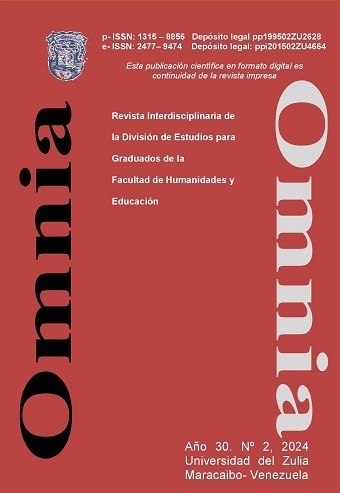Alimentos nutracéuticos: Salud y bienestar humano
Resumen
Los nutracéuticos son compuestos naturales presentes en los alimentos que, además de aportar valor nutricional, promueven la salud al mejorar funciones metabólicas y fisiológicas. Ante la creciente demanda global de alimentos con propiedades nutricionales y terapéuticas, la industria alimentaria enfrenta el reto de desarrollar productos nutracéuticos a gran escala. El Centro de Investigaciones en Química de los Productos Naturales “Dra. Gladys León de Pinto”, ha desarrollado investigaciones en formulación y caracterización de alimentos nutracéuticos a partir de desechos agroindustriales o con compuestos bioactivos. Se desarrollaron mayonesas, yogures y helados ricos en proteínas, utilizando aislados de lactosuero, con altos niveles de cisteína, ácido glutámico y glicina, aminoácidos clave para la síntesis de glutatión, un potente antioxidante que fortalece el sistema inmunológico. También se elaboraron néctares de guanábana y mango con incorporación de hoja pulverizada, cuya composición reveló elevados niveles de vitamina C, fenoles y alta actividad antioxidante. En los néctares de Annona muricata se confirmó la presencia de acetogeninas, compuestos bioactivos que inhiben selectivamente células cancerígenas. Los productos demostraron propiedades nutracéuticas que favorecen la salud y contribuyen a prevenir enfermedades degenerativas.
Descargas
Citas
Chen, Zhen-Yu, Peng, Chun-Yu, Jiao, Rui, Wong, Yong, Yang, Nan, y Huang, Yu (2009). Anti-hypertensive nutraceuticals and functio-nal foods. Journal of Agricultural and Food Chemistry, 57, 4485-4499.
Coria Téllez, Alicia Verónica, Montalvo González, Emma, Yahia, Emilio Martínez, y Obledo Vázquez, Elsa Nayeli (2016). Annona murica-ta: A comprehensive review on its traditional medicinal uses, phy-tochemicals, pharmacological activities, mechanisms of action and toxicity. Arabian Journal of Chemistry, 11(5), 662–691.
Cruzado, María, y Cedrón, José Carlos (2012). Nutracéuticos, alimentos funcionales y su producción. Revista de Química, 26(1-2), 33-36.
González, Sandra, Castro, Wilson, Rincón, Freddy, Beltrán, Oscar, y Briñez, William (2011). Funcionalidad de la goma de Prosopis juli-flora en la preparación de néctar de mango (Mangifera indica L.) de bajo contenido calórico. Revista Técnica de Ingeniería-LUZ, 34(1), 39-47.
Guloyan, Vladimir, Oganesian, Boris, Baghdasaryan, Naira, Yeh, Chia, Singh, Manpreet, Guilford, Frances, Ting, Yi, y Venketaraman, Vikram (2020). Glutathione Supplementation as an Adjunctive Therapy in COVID-19. Antioxidants, 9, 914. https://doi.org/10.3390-/antiox9100914.
Hernández Fuentes, Gerardo A., García Argáez, Alberto N., Peraza Campos, Arturo L., Delgado Enciso, Itzel, Muñiz Valencia, Ra-món, Martínez Martínez, Francisco J., Toninello, Antonio, Gómez Sandoval, Zaira, Mojica Sánchez, José P., Dalla Via, Lorenzo, y Parra Delgado, Héctor (2019). Cytotoxic Acetogenins from the Roots of Annona purpurea. International Journal of Molecular Sciences, 20(8), 1-24.
Hernández Rojas, María, y Vélez Ruíz, Juan (2014). Suero de leche y su aplicación en la elaboración de alimentos. Temas Selectos de In-geniería de los Alimentos, 8(2), 13-22.
Liaw, Ching-Chyuan, Liou, Jung-Ru, Wu, Tzu-Yuan, Chang, Fang-Rong, y Wu, Yi-Chang (2016). Acetogenins from Annonaceae. Progress in the Chemistry of Organic Natural Products, 101, 113-230.
Liu, Yan-Jing, Zhan, Jian, Liu, Xiao-Li, Wang, Ying, Ji, Jing, y He, Qi-Qing (2014). Dietary flavonoids intake and risk of type 2 diabe-tes: a meta–analysis of prospective cohort studies. Clinical Nutri-tion, 33(1), 59–63.
Lollo, Paulo C. B., Amaya-Farfan, Javier, Faria, Ingrid C., Salgado, João V. V., Chacon Mikahil, Márcia P. T., Cruz, André G., Oliveira, Claudio A. F., Montagner, Paulo C., y Arruda, Marcos (2014). Hydrolysed whey protein reduces muscle damage markers in Brazilian elite soccer players compared with whey protein and maltodextrin. A twelve-week in-championship intervention. Inter-national Dairy Journal, 34(1), 19-24.
McDougall, Gordon J (2016). Phenolic-enriched foods: sources and pro-cessing for enhanced health benefits. Proceedings of the Nutrition Society, 76(2), 163–171. https://doi.org/10.1017/S0029665116000835.
Ogbu, Philip, Ugota, Elizabeth, Onwuka, Richard, Ogbu, Ikechukwu, y Aloke, Charles (2020). Effect of acetogenin fraction of Annona muricata leaves on antioxidant status and some indices of benign prostatic hyperplasia in rats. Redox Report, 25(1), 80-86.
Quiñones, Miguel, Miguel, María, y Aleixandre, Ana (2013). Beneficial effects of polyphenols on cardiovascular disease. Pharmacologi-cal Research, 68(1), 125–131.
Silvagno, Franco, Vernone, Antonio, y Pescarmona, Giuseppe Paolo (2020). The Role of Glutathione in Protecting against the Severe Inflammatory Response Triggered by COVID-19. Antioxidants, 9, 624.
Vit, Patricia, Santiago, Beatriz, y Pérez-Pérez, Elena (2014). Composi-ción química y actividad antioxidante de pulpa, hoja y semilla de guanábana Annona muricata L. Interciencia, 39(5), 350-353.
Wang, Jian, Varghese, Mini, Ono, Kenji, Yamada, Masahiro, Levine, Stephen, Tzavaras, Nicholas, Gong, Bo, Hurst, William J., Blitzer, Robert D., y Pasinetti, Giulio M (2014). Cocoa extracts reduce oligomerization of amyloid-β: implications for cognitive impro-vement in Alzheimer's disease. Journal of Alzheimer's Disease, 41(2), 643–650.
Wang, Zhi-Jian, Ohnaka, Keisuke, Morita, Masafumi, Toyomura, Keisu-ke, Kono, Shoichi, Ueki, Takashi, Tanaka, Masahiro, Kakeji, Yos-hifumi, Maehara, Yoshifumi, Okamura, Tetsuo, Ikejiri, Koji, Fu-tami, Kazunori, Maekawa, Tetsuya, Yasunami, Yasuo, Takenaka, Kiyoshi, Ichimiya, Hiroyuki, y Terasaka, Ryo (2013). Dietary polyphenols and colorectal cancer risk: the Fukuoka colorectal cancer study. World Journal of Gastroenterology, 19(17), 2683–2690.
Zang, Sheng, Tian, Shenghua, Jiang, Jie, Han, Dong, Yu, Xiaojie, Wang, Kun, y Zhang, Zhaoxia (2017). Determination of antioxidant capa-city of diverse fruits by electron spin resonance (ESR) and UV–vis spectrometries. Food Chemistry, 221, 1221–1225.





